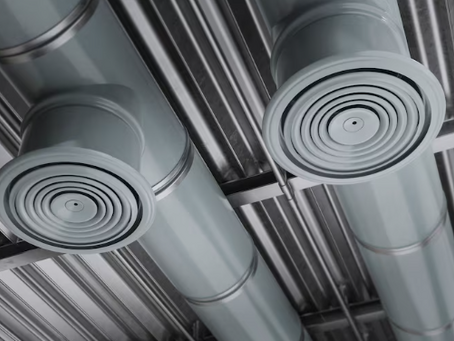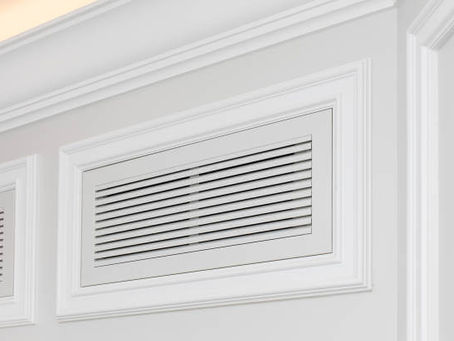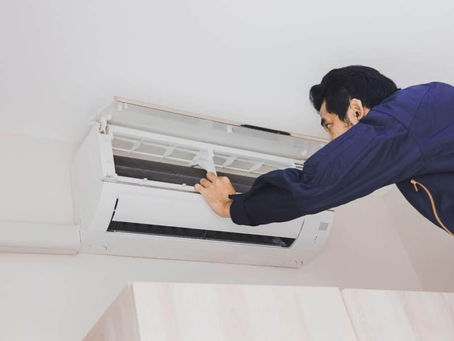top of page
Search
All Posts


Essential Tips on How to Connect Flex Duct to Rigid Duct Efficiently
Learn essential tips on how to efficiently connect flex duct to rigid duct, including step-by-step instructions for secure, leak-free connections and optimal airflow.


What Is the Biggest Drawback of Using a Spiral Flexible Duct?
Discover the biggest drawback of using spiral flexible duct, including airflow restrictions, difficulty in installation, and potential long-term maintenance issues.


Step-by-Step Instructions on How to Connect Flex Duct to Flex Duct
Get expert instructions on connecting flex duct to flex duct, including securing, sealing, and checking for leaks to ensure smooth airflow in your home.


Understanding the Main Problem With Flex Duct in Your Home
Explore the key issues with flex duct in your home, from airflow restrictions to leaks, and how they impact your HVAC system’s performance.


What Is the Life Expectancy of Flexible Ductwork?
Understand the life expectancy of flexible ductwork, which lasts 10 to 15 years, and how maintenance can help maximize its efficiency and lifespan.


What Is the $5000 Rule for AC: Key Insights for Homeowners
Understand the $5000 rule for AC and how it helps homeowners determine when to replace their air conditioner instead of repairing.


When Should You Consider AC Replacement: Key Factors to Know
Know when to consider AC replacement by evaluating key factors like age, repair history, and efficiency.


How to Recognize the Signs Your Air Conditioner May Need Replacement
Learn how to recognize the signs your air conditioner may need replacement, including constant repairs and rising energy bills.


Air Conditioning Replacement or Repair: A Complete Guide to Your Options
This guide helps homeowners decide between air conditioning replacement or repair, considering costs, age, and efficiency.


20-Year-Old AC Unit: Is It Time to Repair or Replace
Discover whether it’s time to repair or replace your 20-year-old AC unit based on age, efficiency, and performance.


How Do I Know If I Have a Heat Pump or Forced Air: Learn the Key Differences
Identify your HVAC system: heat pumps move heat both ways for year-round efficiency, while forced air heats or cools via ducts and a furnace.


How to Clean Heat Pump Filter: Easy Instructions for Homeowners
Clean your heat pump filter regularly by removing dust and debris to boost efficiency, lower energy bills, and prolong your system’s lifespan.


How to Clean Furnace Heat Exchanger: DIY Tips for Maintenance
Clean your furnace heat exchanger safely by turning off power, removing dirt buildup, and reassembling to keep your system efficient and long-lasting.


What Is Conventional Forced Air Heat: A Look at Its Heating Process
Forced air heating warms homes by moving heated air through ducts and vents, offering fast, even heat, improved air quality, and easy maintenance.


Why High-Efficiency Furnaces Are the Norm: Benefits You Should Know
High-efficiency furnaces lower energy bills, boost comfort, reduce emissions, and last longer, making them the smart choice for modern homes.


Finding the Best Temperature for Sleep: A Simple Solution for Better Sleep
The ideal sleep temperature is between 60-67°F, helping your body cool naturally for deeper, more restful sleep.


How Does HVAC Heating and Cooling Work: A Complete Guide
HVAC systems use thermodynamics, ducts, refrigerants, and thermostats to efficiently heat and cool your home, saving energy and improving comfort.


The Best Heating and Cooling for Old Houses: Tips for Homeowners
Upgrade HVAC, insulation, and windows in old houses for better efficiency, comfort, and energy savings with smart thermostats and zoning systems.


What Is Ductless Heating and Cooling: Expert Insights
Ductless heating and cooling systems offer energy efficiency, precise temperature control, and easy installation without the need for ducts.


Does a New Roof Improve Heating and Cooling Efficiency
A new roof with proper insulation, materials, color, and ventilation can reduce heating and cooling bills by up to 15%, boosting energy efficiency.
bottom of page

